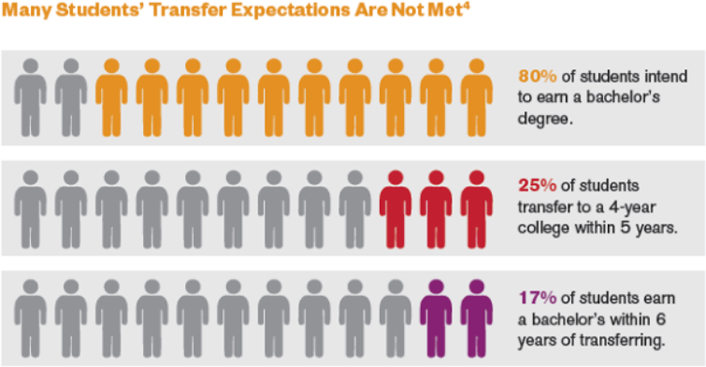
I once taught a University 101 course for transfer students.
The students came from community colleges and other four-year institutions. Some were residential and others commuted to the campus. The university adapted the curriculum and syllabus for this course, which was originally designed for first-year students, to help them with their transition to the university. Setting students up for success in their first semester, the course provided an introduction to campus resources (services and people), a small group of peers to connect with, and time to plan their academic careers and think about the kind of learner they wanted to be.
I'll never forget that I was with one University 101 transfer class on a "scavenger hunt" in the university library on September 11, 2001, because they were searching through the stacks at the time of the attacks. The semester was particularly intense because of this historic event and other local events that followed, and I knew there was a lot riding on the course's ability to deliver on setting these students up for success.
Fifteen years ago, we (that is, the collective "we" in higher education) understood that transferring to a new institution was difficult for so many reasons; without support, these students might not make it.
Today, we know even more about what transfer students need and how we can help them achieve success. And the Community College Research Center put it all together in a research overview filled with visuals, called, aptly, What We Know About Transfer.
What We Know About Transfer
The problem is that there are many, many students who get caught up in the complicated transfer process. The Community College Research Center reported that few community college students who want to earn a bachelor's degree actually wind up transferring to other institutions.

Source: What We Know About Transfer, Community College Research Center, January 2016.
For those students who do transfer, one of the greatest barriers to completing a bachelor's degree is the hit they take on their progress when the credits they have already earned don't transfer with them. Those 'disappearing credits' often represent a significant investment in terms of time, money and effort.
And, it's likely no surprise that the transfer process is not equitable among different groups. Black and Hispanic students and struggling students were more likely than other groups to transfer to for-profit colleges, where the completion rate for transfers is abysmal — a mere 35 percent, as compared to 60 and 65 percent at private nonprofit and public institutions.

This month, the Aspen Institute and the Community College Research Center has created The Transfer Playbook, a guide filled with strategies and essential practices based on the efforts of high-performing community colleges and universities.
Advising, an Essential Practice for Transfer Student Success
Here's a quick summary of the strategies you can learn more about in the playbook:

I'm intrigued that providing tailored transfer student advising is one of three core, essential strategies. The Integrated Planning and Advising for Student Success (iPASS) grant program aims to achieve tech-mediated advising reform. And among the high-performing community college/university pairs that the Aspen Institute and CCRC staff visited are two iPASS institutions: Colorado State University and the University of Washington.
The report states that, "In 2009, Colorado State University (CSU) created a new transfer center in the admission office, in which four experienced transfer advisors work on an integrated approach to outreach, recruitment, orientation, and advising of transfer students. Staff in the center regularly communicate with transfer advisors embedded in the colleges." (p. 33). CSU also provides a research-designed transfer student orientation to maximize retention rates and ensure that a program which covers tuition costs for Pell-eligible Colorado residents is available to transfer students, as well as other students at the university.
The University of Washington (UW) "embedded transfer advisors in specific colleges while also offering general transfer advisors for students who are undecided or trying to gain admission to a college." (p. 33). UW is also on the cutting edge of transfer student success. The university is involved in monitoring student progress across the entire transfer pathway, and creating statewide articulation agreements that align broad gen ed articulation agreements with major-specific pathways in science.
Such high-touch programs are designed to help transfer students — arguably among the most vulnerable student populations in higher ed — in staying informed, engaged and on track.
Recommended Reading
Find out how iPASS colleges and universities are working to transform advising to better support their students:
- Turning Data into Actionable Information at Colorado State University, Part 1 & Part 2: Strategic and systemic change at Colorado State University is regularly informed by data; student success-related examples include academic preparation, learning communities, and identifying at risk students.
- Reflections on Communicating a Vision for iPASS Reforms: Integrated planning and advising, when done correctly, is a form of institutional design work shaping the foundations, structures, and culture across a college.
- What We Learned from the JW Marriott Hotel about Student Success Efforts: After a welcoming conference stay, the authors reflect on how colleges make students feel welcome and how they meet students' needs while enrolled.
Kristen Vogt is knowledge management officer, Next Generation Learning Challenges at EDUCAUSE.
